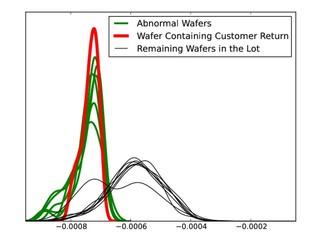Automobiles are known for their extremely strict requirements for defect rates. For normal industrial and consumer use, if one million semiconductor chips are shipped, from several to a dozen semiconductor chips are returned as defective products from customers. The defect rate at this time is expressed as several ppm, ten and several ppm. ppm is called parts per million, and indicates a ratio of 1/10,000 of 100 parts.
It is said that automobile manufacturers and automobile electrical component manufacturers require semiconductor manufacturers to have a defect rate of less than 1 ppm. This is a very strict standard for semiconductor manufacturers, and is said to be impossible to achieve unless the design, manufacturing, and inspection departments work together.
There are two main reasons why such high reliability (low defect rate) is required for automobiles.
One is that the car is a system that is closely related to human life. An out-of-control vehicle can easily cause an accident and cost precious lives.

Another reason is that the production volume is extremely high. For example, Toyota Motor Corporation produced approximately 7.86 million vehicles worldwide in 2011 (including affiliated companies), and approximately 9.91 million vehicles in 2012 (same).
Let's say a car has 10 microcomputers (actually more). Assuming that Toyota's annual production volume is about 10 million units, 100 million microcomputers will be newly installed annually. Assuming a defect rate of 1ppm, 100 microcomputers become defective each year. Microcomputer defects occur in up to 100 cars. The reason why we have limited ourselves to microcomputers is that among automotive semiconductors, microcomputers are the most complex components that can easily affect vehicle safety. In other words, it is a difficult part for semiconductor manufacturers to reduce the defect rate.
Automobile manufacturers and automotive electrical component manufacturers' true intentions for semiconductor chips would be "zero defects." Even if you deliver hundreds of millions of chips, it means "zero defective products". In reality, it is impossible to achieve zero defects, so the value of "defect rate less than 1ppm" is a rough compromise.
Actually, the number of defective semiconductor chips is not zero. In other words, semiconductor chips shipped to automotive electrical component manufacturers are returned to semiconductor manufacturers when defects are found. The semiconductor manufacturer analyzes the returned semiconductor chip and submits a report to the customer (automotive electrical component manufacturer, automobile manufacturer, etc.).
Assuming that the frequency of finding failures (the number of failures per unit time) is the frequency of occurrence of failures, this frequency is expressed in units of "FIT" (Failure In Time). 1 FIT means that a defect occurs once every 10 9 times (1 billion hours). Or it means that out of 1 billion semiconductor chips shipped, one will be defective every hour.
Freescale Semiconductor, a major manufacturer of automotive semiconductors, has maintained a low defect rate of less than 1ppm in the sales performance of automotive microcontrollers. At the "International Reliability Physics Symposium" (IRPS 2013), two research papers on part of this effort were published. Both are attempts to analyze semiconductor chips returned to Freescale after defects are found by customers, and utilize them to reduce the defect rate. It's a very interesting experiment, so I'd like to introduce an overview of it.

![EVsmart blog Toyota's electric car "bZ4X" that makes you feel comfortable with electric cars and quick chargers / No% display of battery level [Editorial department] Popular articles Recent posts Category](https://website-google-hk.oss-cn-hongkong.aliyuncs.com/drawing/article_results_9/2022/3/9/752542064665dc2bd7addbc87a655694_0.jpeg)
![Lenovo's 8.8 inch one-handed tab "Legion Y700" full specs released! [Is the price in the 40,000 yen range?]](https://website-google-hk.oss-cn-hongkong.aliyuncs.com/drawing/article_results_9/2022/3/9/207e1be231154e91f34c85b4b1d2126c_0.jpeg)

